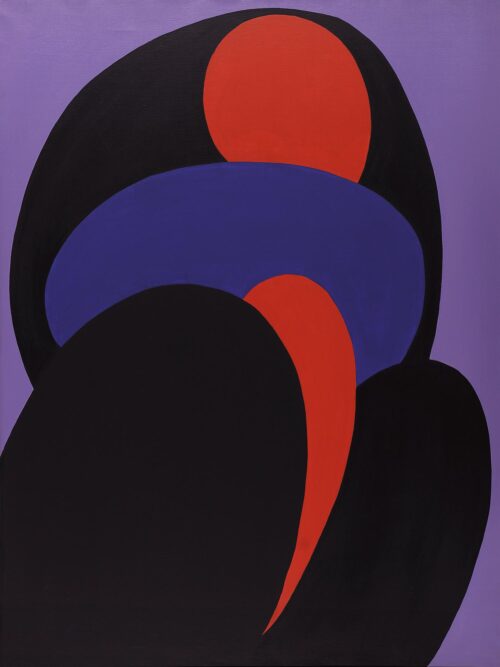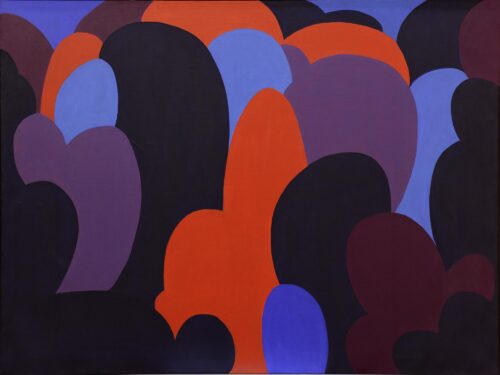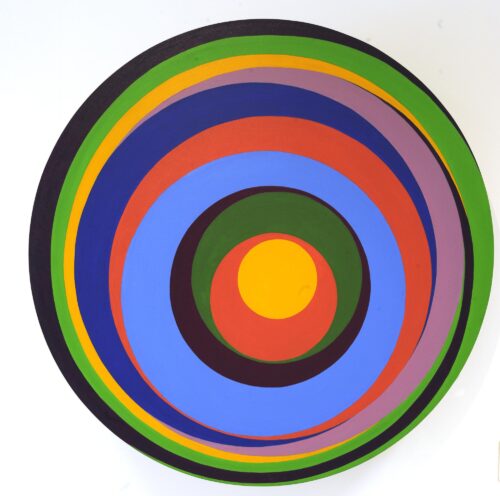
Hios Theo (1910 - 1999)
Virgin and Child, 1965
Theodoros Chios studied painting in New York during the 1930s, after having studied Law at the University of Athens for two years. In 1942-1945, he served as a photographer and painter in the United States Marine Corps. In the late 1930s, he appears to have been working as a children’s book illustrator under Works Progress Administration (WPA), the U.S. federal programme for support of artists during the Depression. Chios also worked as an art teacher. His earliest works demonstrate the artist’s interest in the repercussions of Cubism, manifested in the way in which he used drawing in his otherwise naturalistic works. As was natural for an artist who lived in the U.S., he became familiar with the prevailing language of Abstract Expressionism, to the extent at least that he could grasp them. Thus, he had an abstract approach to the landscape in his visit to Greece in the early 1950s. During the following twenty years, he transformed his subjects into geometrical shapes invested with vibrant colours. In the late 1970s, he made a series of portraits inspired by Byzantine iconography, whereas in the following years he returned to figurative painting, in which typical, touristy versions of the Greek landscape prevailed (obviously dictated by the commercial demand for his work in the U.S.). Theodoros Chios had solo exhibitions and participated in group exhibitions in art galleries mostly in New York but also in other U.S. cities. In 1989, he had a solo exhibition at the Koumantareios Art Gallery in his native Sparta, in the Peloponnese.

Virgin and Child, 1965

Meteora

Tondo (Apollo series), 1973

We use cookies to make our site work properly, to personalize content and ads, to provide social media features and to analyze our traffic. We also share information about how you use our site with our social media, advertising and analytics partners. Read the Cookies Policy.
These cookies are necessary for the website to function and cannot be switched off in our systems. They are usually only set in response to actions made by you which amount to a request for services, such as setting your privacy preferences, logging in or filling in forms. You can set your browser to block or alert you about these cookies, but some parts of the site will not then work. These cookies do not store any personally identifiable information.
If you disable this cookie, we will not be able to save your preferences. This means that every time you visit this website you will need to enable or disable cookies again.
These cookies tell us about how you use the site and they help us to make it better. For example these cookies count the number of visitors to our website and see how visitors move around when they are using it. This helps us to improve the way our site works, for example, by ensuring that users find what they are looking for easily. Our website uses Google Analytics for statistics reporting.
Please enable Strictly Necessary Cookies first so that we can save your preferences!